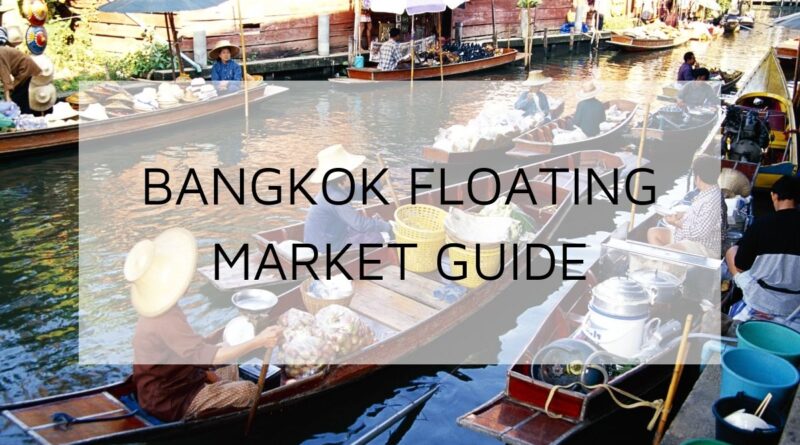Bangkok Floating Markets | All You Need To Know
Table of Contents
One of the first answers to the question of what to do in Bangkok is taking a floating market tour. Since it’s not an activity you can experience just anywhere in the world, a floating market tour is a must-do while you’re in Thailand.
NOTE: Please, use the subtitle from Turkish to English.
During the approximately one-hour floating market experience, where you’ll ride wooden canoes, engage in amusing conversations with vendors trying to sell you souvenirs along the river, and try exotic flavors, here’s what awaits you, how much the tour costs, and the things you need to pay attention to.
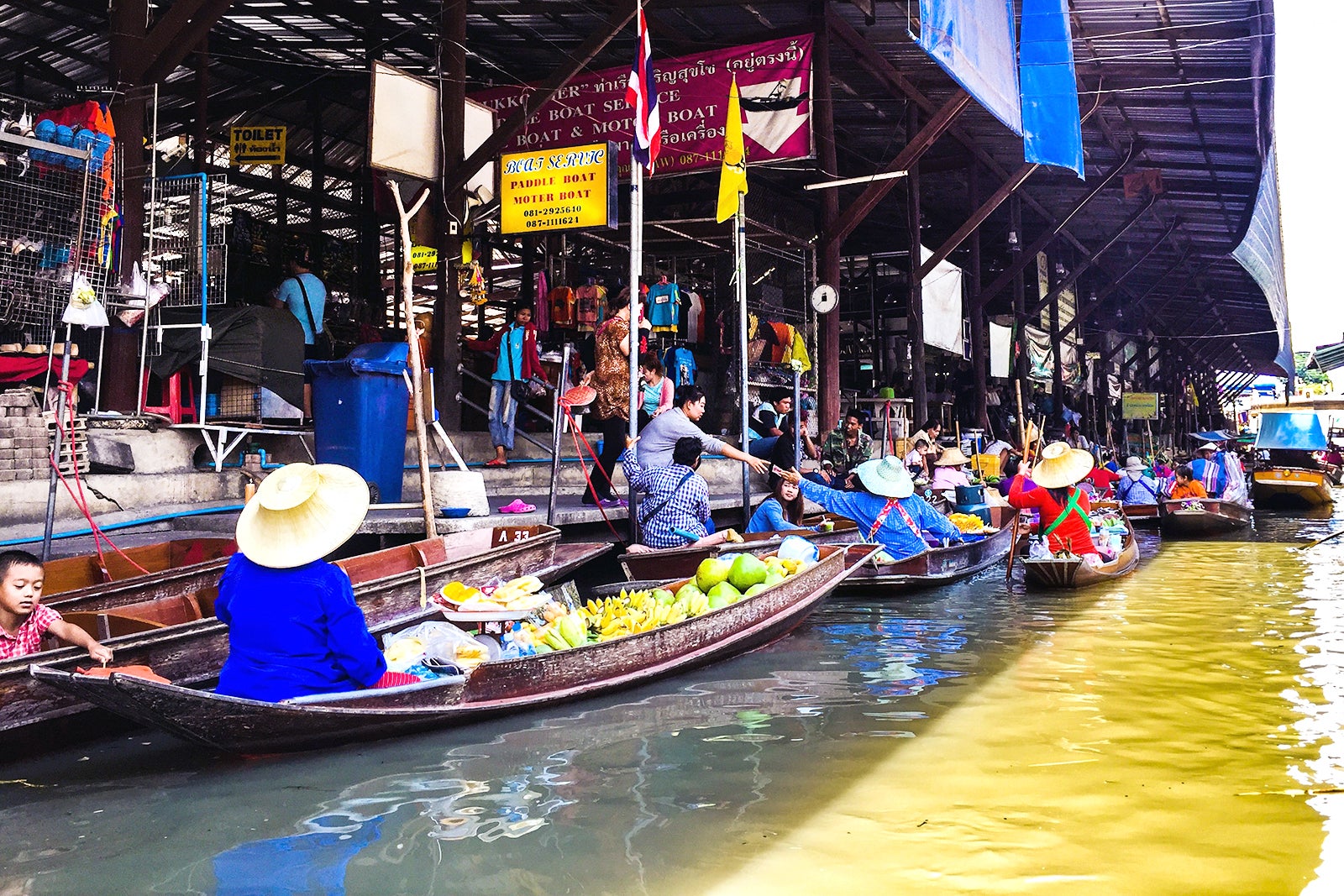
By the way, another activity you can do on the same day as the floating market is visiting the Bangkok Maeklong Railway Market. If you’re interested, we also have a detailed article about it. Feel free to check it out! 🙂
Where Is the Floating Market in Bangkok?
First of all, there isn’t just one floating market in Bangkok. You’ll need to choose which floating market to visit based on factors like proximity to where you’re staying, popularity, and ticket prices. However, no matter which one you choose, it will be a unique and unforgettable experience.
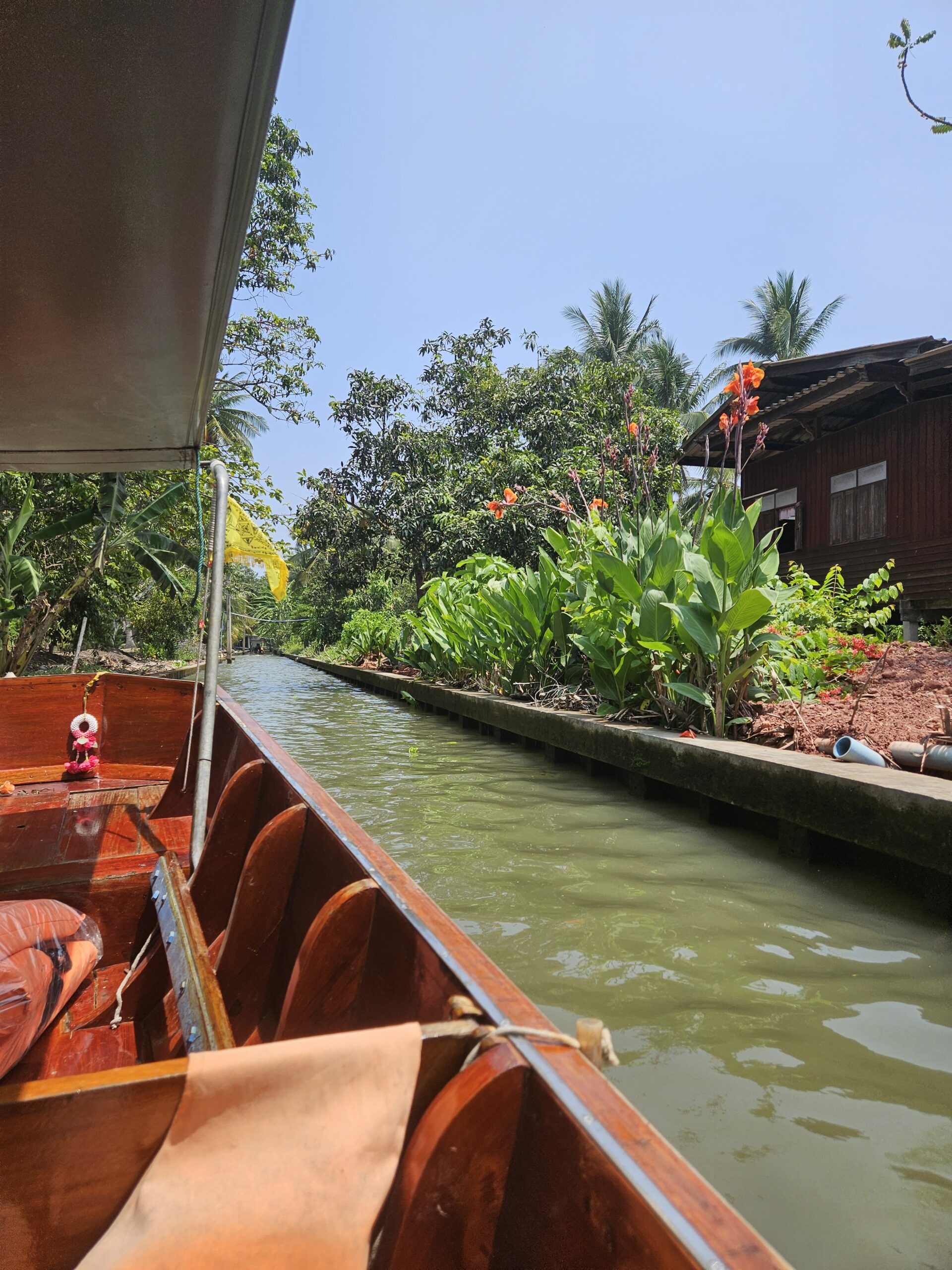
What Are the Most Popular Floating Markets?
To help you decide, here are the most well-known markets and a brief description of what to expect:
- Damnoen Saduak Floating Market: Located about 100 km from Bangkok, it is the most popular choice due to its proximity to the train market. We also visited this one.
- Amphawa Floating Market: Situated about 50 km southwest of Bangkok in the Samut Songkhram region, it’s known for its seafood and lively atmosphere in the evening.
- Taling Chan Floating Market: One of the closest floating markets to Bangkok city center. It’s less crowded and offers a more authentic experience.
- Khlong Lat Mayom Floating Market: Located west of Bangkok, near Taling Chan, it’s popular among locals and provides a natural atmosphere.
- Bang Nam Phueng Floating Market: Situated southeast of Bangkok in the Bang Kachao area, it’s smaller but notable for its surrounding natural environment.
- Tha Kha Floating Market: Found near Amphawa in Samut Songkhram, this is a quieter market where locals do their daily shopping.
How to Get to the Floating Markets?
Transportation depends on the market you want to visit, but the best options are joining a tour or renting a vehicle.
- How to Get to Damnoen Saduak: You can reach it in about 1.5 hours by tour or taxi.
- How to Get to Amphawa: Minibuses or private vehicles can take you there in 1-1.5 hours.
- How to Get to Taling Chan and Khlong Lat Mayom: Since they are closer to the city center, you can combine BTS and taxi transportation.
Plan Your Floating Market Tour
How Much Does a Floating Market Tour Cost?
The floating market was the only activity in Bangkok where we felt overcharged. Since we didn’t book a tour in advance, the ticket sellers at Damnoen Saduak refused to negotiate, claiming the prices were set by the government. They were firm about it. As we needed to catch the train market afterward, we didn’t have time to explore other floating markets for price comparisons and had to agree. We paid approximately 1,500 THB per person.
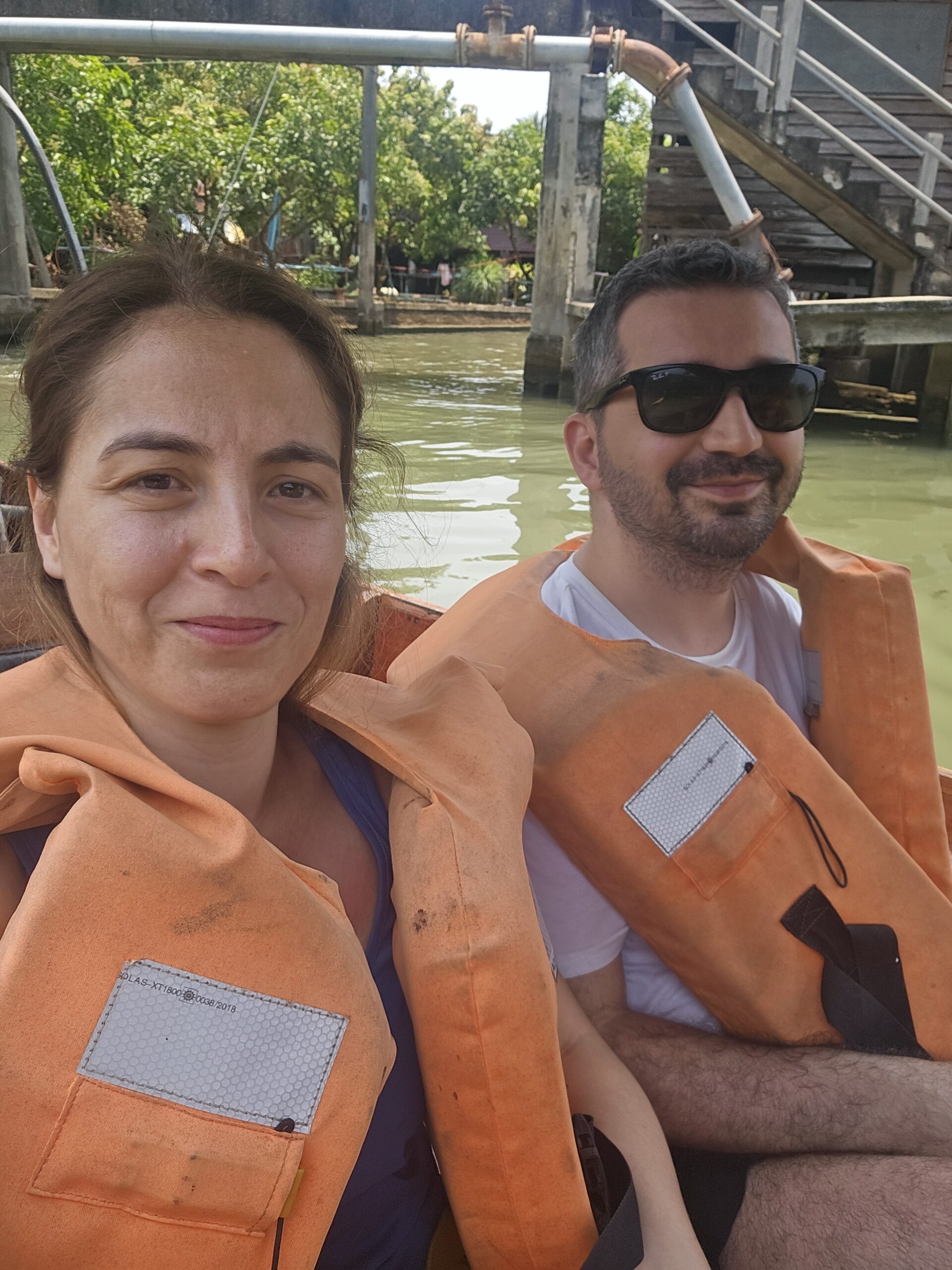
Don’t make the same mistake—research tour packages in advance. Keep in mind that prices can vary depending on the timing of the boat tour.
Is There an Entrance Fee?
If you don’t plan to take a long-tail boat tour along the river, there is no entrance fee. However, skipping the boat tour means missing out on the full floating market experience.
FAQ About Bangkok Floating Markets
What is the famous floating market in Bangkok?
The most famous floating market in Bangkok is Damnoen Saduak Floating Market, located about 100 km from the city. It’s known for its vibrant atmosphere, colorful boats, and traditional Thai products.
Is Bangkok floating market worth it?
Yes, visiting a floating market in Bangkok is worth it for the unique experience of shopping and dining from boats, something you won’t find in many other places in the world. It offers a glimpse into Thailand’s culture and daily life.
Is the floating market in Bangkok free?
Yes, entry to the floating markets is free if you don’t take a boat tour. However, to fully experience the market, hiring a boat is recommended, which typically costs around 1,500 THB per person at Damnoen Saduak.
What Are the Opening Hours of Floating Markets?
Most floating markets open early in the morning and close by the afternoon. For instance, Damnoen Saduak operates from 7:00 AM to 12:00 PM. If you prefer a cooler time to visit, consider Amphawa, which opens in the afternoon and remains active into the evening.
What Is Sold at Floating Markets?
Floating markets offer tropical fruits, fresh vegetables, seafood, local Thai dishes, handmade souvenirs, bags, decorative accessories, paintings, and textiles.
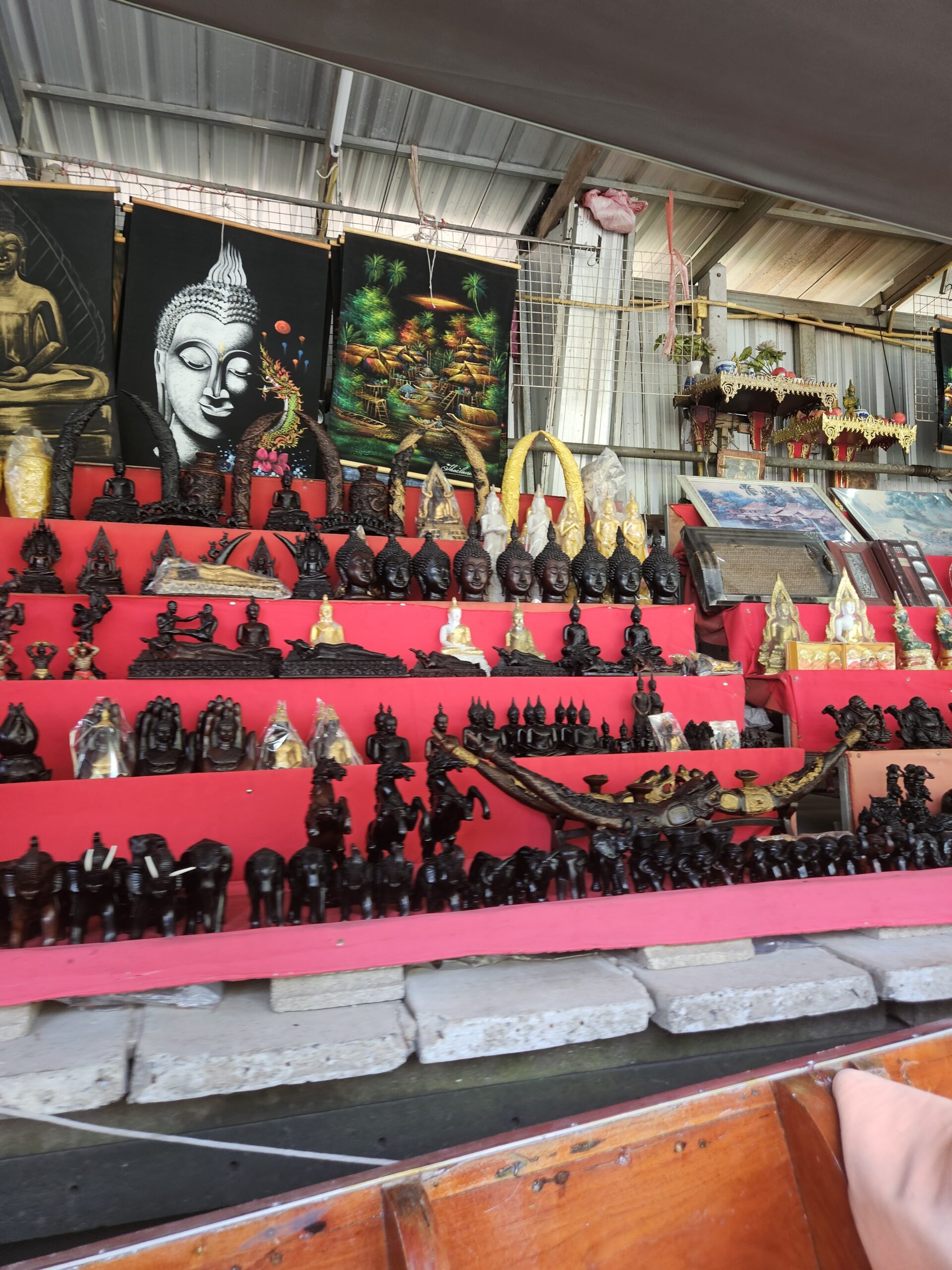
We didn’t shop much due to the overcharging at the entrance, but we did enjoy a coconut ice cream, which cost 80 THB.
Can You Bargain at Floating Markets?
Yes, bargaining is common. In fact, it’s essential in Thailand! Vendors at floating markets often quote higher prices, so don’t hesitate to negotiate. Start with an offer 30-50% below the initial price.
What to Eat at Floating Markets?
Fresh seafood, tropical fruits, Thai street food, and local dishes cooked on the boats are must-tries. Alternatively, you can dine at nearby restaurant-style establishments if you’re not taking a boat tour.
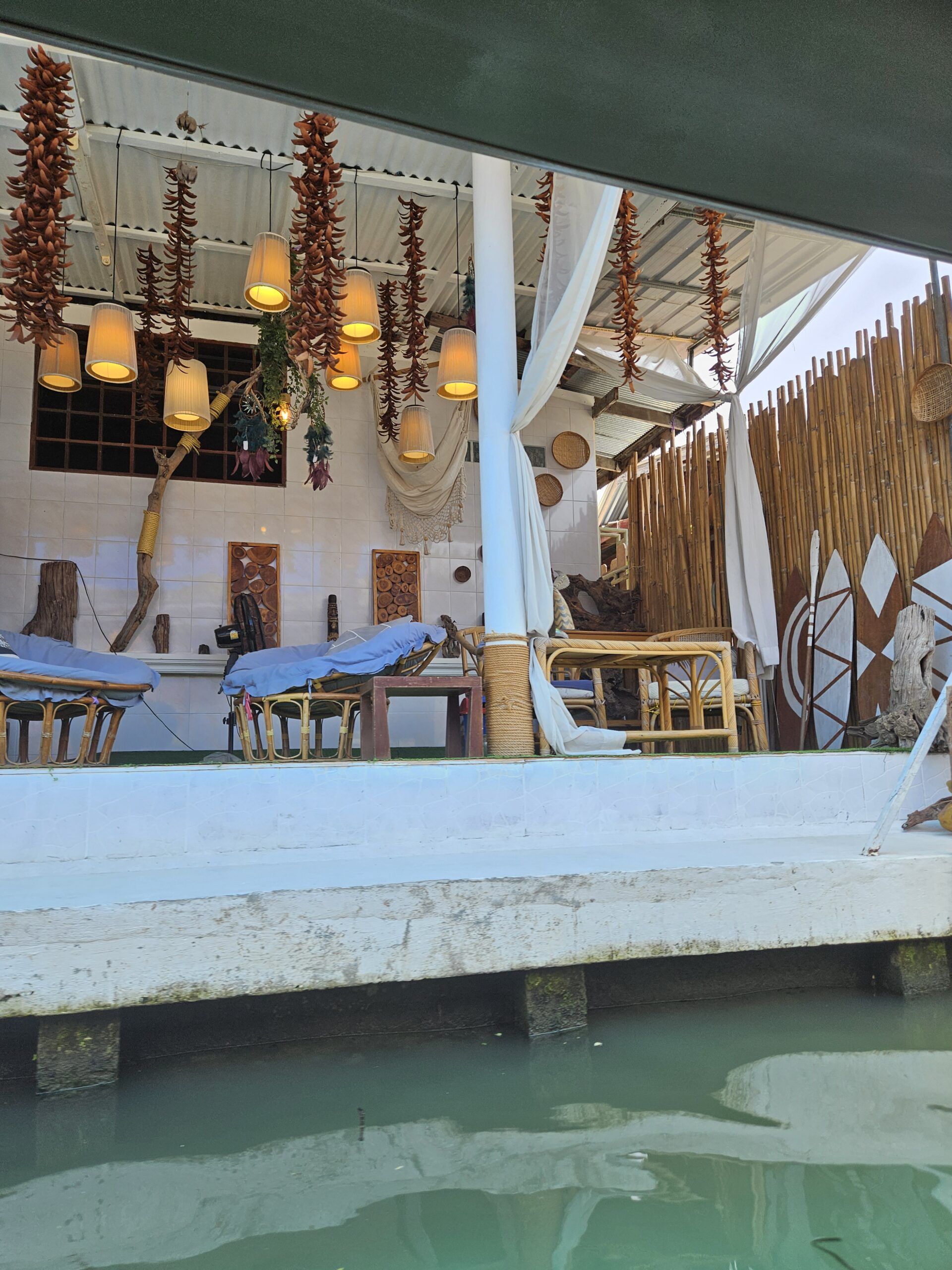
We opted for ice cream while exploring the river.
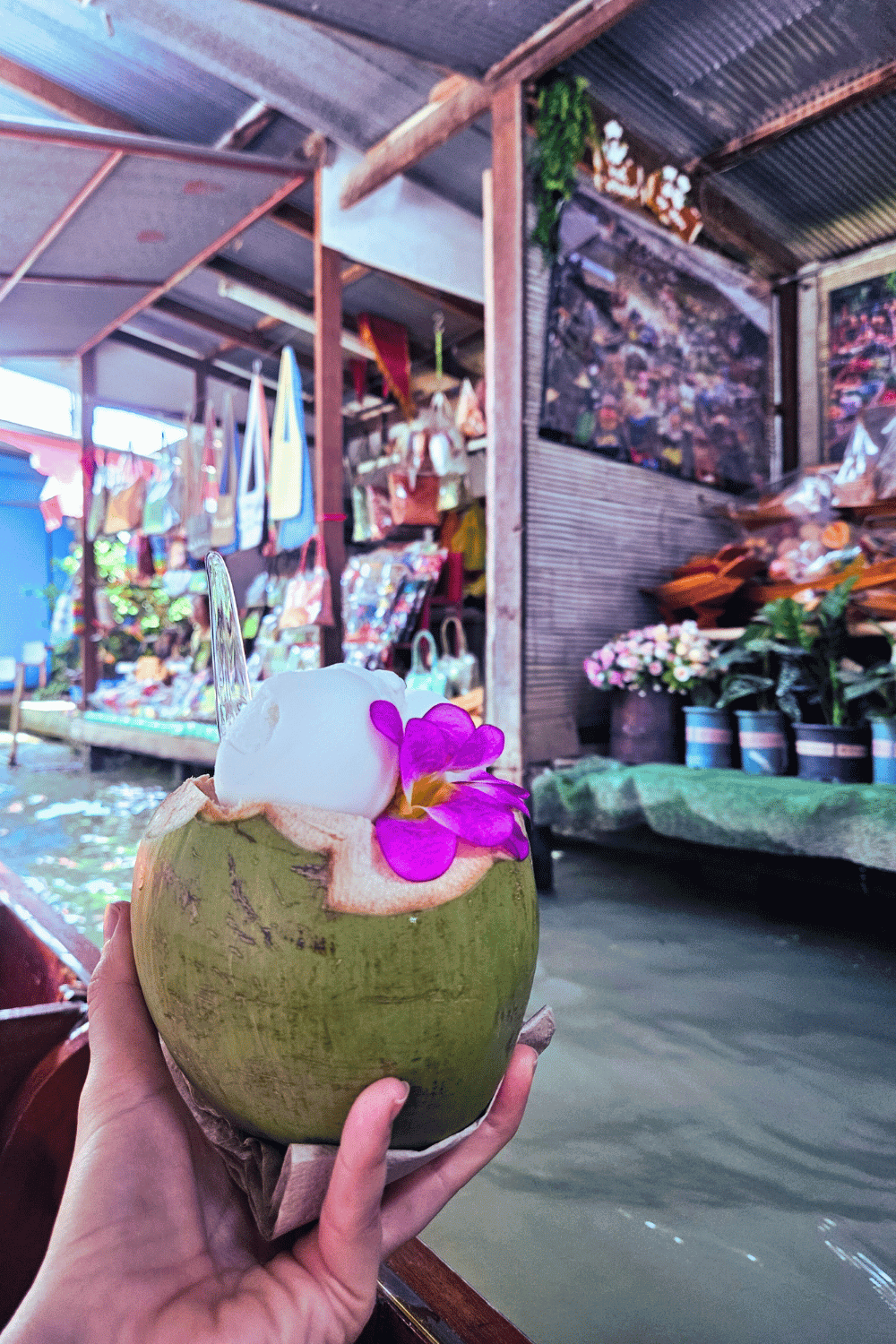
Is Photography Allowed?
Yes, you can take photos at floating markets. However, be mindful of the privacy of the locals, as many live and work in the same area.
Tips for Visiting Floating Markets
Plan Your Tour in Advance
Prices and tour inclusions vary depending on the market and tour operator. Research boat tour costs and ask about what’s included in the price before booking. Compare options to find the best deal.
Bargain
Prices are often inflated for tourists, so negotiate to get a better deal. Start with an offer 30-50% lower than the quoted price.
Carry Cash
Many vendors don’t accept credit cards, so having cash on hand is essential. This also gives you better bargaining power.
Visit Early
Morning is the best time to visit floating markets as they are less crowded, cooler, and more vibrant. However, if you visit too early, there may be fewer boats on the river. Find a good balance.
Check Product Quality
Inspect items carefully before purchasing, especially fresh produce and handmade goods, as returning for exchanges isn’t feasible.
Protect Yourself from the Sun
Wear a hat, sunglasses, and sunscreen to shield yourself from the sun, as most markets are outdoors.
Respect the Locals
Always ask for permission before photographing people, especially locals, to respect their privacy.
Watch Your Belongings
Be cautious with your bags, especially during crowded boat rides. Use a crossbody bag to keep your belongings secure.
Be Careful Around the Water
Take extra care when boarding or disembarking boats, as they can be unstable. Avoid dropping your valuables, and watch your step to prevent accidents.
Compare Prices
The same item may be sold at different prices across vendors. Take your time to compare before making a purchase.

Plan Your Return Journey
If you didn’t book a tour, plan your return trip in advance, especially during peak hours when transportation options might be limited.
Plan a Tour
Protect the Environment
Dispose of trash responsibly and avoid littering in the water or market area.
***
We’ve tried to provide all the information you need about floating market tours in Bangkok. If you have any additional questions or feedback, feel free to comment or reach out to us on Instagram: @tutmayinbizi.
For nearby activities, check out our guide on Things to Do in Bangkok.
If you’re heading to Phuket next, you can read our guide on How to Get from Bangkok to Phuket. And if you haven’t yet planned your trip to Bangkok, check out our article on How to Get from Istanbul to Bangkok.

